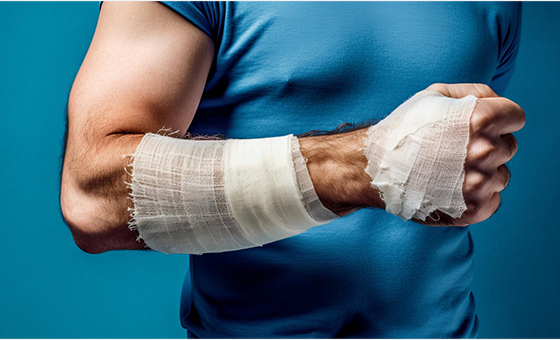Breaking Down the Basics: What Every Law Firm Should Know About Personal Injury Leads

The legal landscape is fiercely competitive, especially in the realm of personal injury law. For many law firms, personal injury leads are not just a source of business; they’re often an integral component in the firm’s presence and a means of connecting with individuals who need their services the most. This article delves into the essentials of personal injury leads, their importance, sourcing, handling, and the legal and ethical considerations involved.
Importance of Personal Injury Leads for Law Firms
Personal injury leads can be pivotal for law firms. They represent potential clients who might have suffered harm due to someone else's negligence or intentional actions and are seeking legal representation. These leads can sometimes be the starting point for building a client base and driving revenue, crucial for many growing or established law firms.
Understanding Personal Injury Leads
A personal injury lead is more than just contact information. Let’s explore some of the ways leads can be generated in the legal field.
Referrals from Previous Clients:
Often, the most potent leads come from past clients who were satisfied with the legal services they received. These clients can become advocates for the firm, sharing their positive experiences through word-of-mouth. This organic form of lead generation is often seen as highly valuable as it often comes with built-in trust and credibility. Law firms can work to foster such referrals by maintaining strong relationships with former clients and encouraging them to refer others who may need similar legal assistance.
Online Lead Generation Platforms:
With the digitalization of services, online platforms have become a popular source of personal injury leads. These platforms range from legal directories to specialized lead generation websites that connect potential clients directly with law firms. These services often use advanced algorithms and targeted marketing to reach individuals who are actively seeking legal representation for personal injury cases. Law firms can capitalize on these platforms by ensuring a strong online presence and engaging with platforms that align with their areas of expertise and target demographics.
Marketing Campaigns and Advertisements:
Targeted marketing campaigns and advertisements are also often instrumental in generating leads. This can include digital marketing strategies like search engine optimization (SEO), pay-per-click (PPC) advertising, and social media campaigns, as well as traditional methods like TV, radio, and print advertisements.
The key to successful marketing is to convey the firm’s expertise in handling personal injury cases, its track record of success, and its commitment to clients. Educational content, testimonials, and case studies can be particularly effective in demonstrating the firm's capabilities and in encouraging potential clients to initiate contact.
Potential Benefits of Personal Injury Leads for Law Firms
Efficiently managed personal injury leads can result in:
- Increased Client Base and Revenue: More leads can translate to more clients and, consequently, can translate to higher revenue.
- Streamlined Marketing Efforts: Targeted advertising can often yield higher quality leads.
- Enhanced Reputation and Brand Recognition: Successful cases can bolster a firm's reputation, leading to more referrals.
How to Identify Quality Personal Injury Leads
Not all leads are created equal. Quality leads are often characterized by factors such as:
- Accuracy and Relevance of Information: Ensuring the lead's details are current and applicable.
- Conversion Potential: The likelihood of a lead becoming a client.
- Exclusive vs. Shared Leads: Exclusive leads are generally more valuable as they aren't shared with other firms.
Strategies for Efficiently Handling Personal Injury Leads
Establishing an Effective Intake Process:
Creating a streamlined intake process is crucial for rapidly and accurately assessing the potential of incoming leads. This typically involves having a dedicated team or system in place to capture lead information, gauge the urgency and severity of the case, and determine the legal services required. Automating part of the process with tools like CRM software can help in sorting and recording lead information efficiently.
Qualifying and Prioritizing Leads:
It's often essential to assess leads based on case viability and potential return. This involves evaluating the details of the incident, the clarity of liability, the extent of injuries or damages, and the lead's expectations. Prioritizing leads that have a higher likelihood of conversion and profitability may allow for more effective allocation of resources.
Tracking and Analyzing Lead Data:
Consistently tracking and analyzing lead data aims to help in refining marketing strategies and improving the quality of leads over time. This can include monitoring the sources of high-quality leads, understanding the demographics of potential clients, and assessing the conversion rates of different types of leads. Data-driven insights can guide adjustments in marketing and outreach efforts.
Best Practices for Converting Personal Injury Leads into Clients
Prompt Responses to Inquiries:
Rapid response to inquiries can demonstrate to potential clients that the firm is attentive and values their concerns. This can sometimes be facilitated by automating initial responses and ensuring that a team member follows up as soon as possible.
Building Trust and Rapport:
Developing a relationship with potential clients is often key. This can be approached through empathetic communication, understanding their situation, and expressing genuine interest in helping them. Personalized interactions can foster trust, which is critical in the client's decision-making process.
Providing Personalized Legal Advice:
Offering advice tailored to the specific circumstances of each lead demonstrates expertise and commitment. This involves not just a legal analysis of the case but also understanding the personal impact on the client and addressing their unique concerns.
Following Up and Nurturing Relationships:
Consistent follow-up and keeping potential clients informed about their case and related legal matters can keep them engaged. Regular updates, informative content, and check-ins can nurture these relationships, often increasing the likelihood of conversion.
Legal and Ethical Considerations in Acquiring Personal Injury Leads
Adhere to Legal and Ethical Guidelines:
Law firms must ensure their practices comply with state and federal laws, including regulations on advertising, solicitation, and client confidentiality. This includes being transparent about services offered and fees charged.
Avoid Illegal or Unethical Lead Generation Practices:
This encompasses steering clear of misleading advertising, not engaging in the purchase of leads through unethical means, and avoiding any form of misrepresentation.
Ensure Data Privacy and Protection:
Respecting the confidentiality and privacy of potential clients is paramount. This involves securing personal data, maintaining client confidentiality, and being compliant with privacy laws such as HIPAA and GDPR, as applicable.
Conclusion
Personal injury leads are often critical for the growth and sustainability of law firms. Understanding their sources, benefits, and handling strategies is, as such, often crucial. By following best practices and adhering to legal and ethical standards, law firms can aim to maximize the potential of these leads, in turn potentially converting them into valuable clients and supporting a robust and reputable practice.
Remember — if you’re looking for ways to improve your approach to lead generation, don’t hesitate to reach out. Discover how Legal Growth Marketing can help you transform your lead approach, and book a meeting with sales today.



